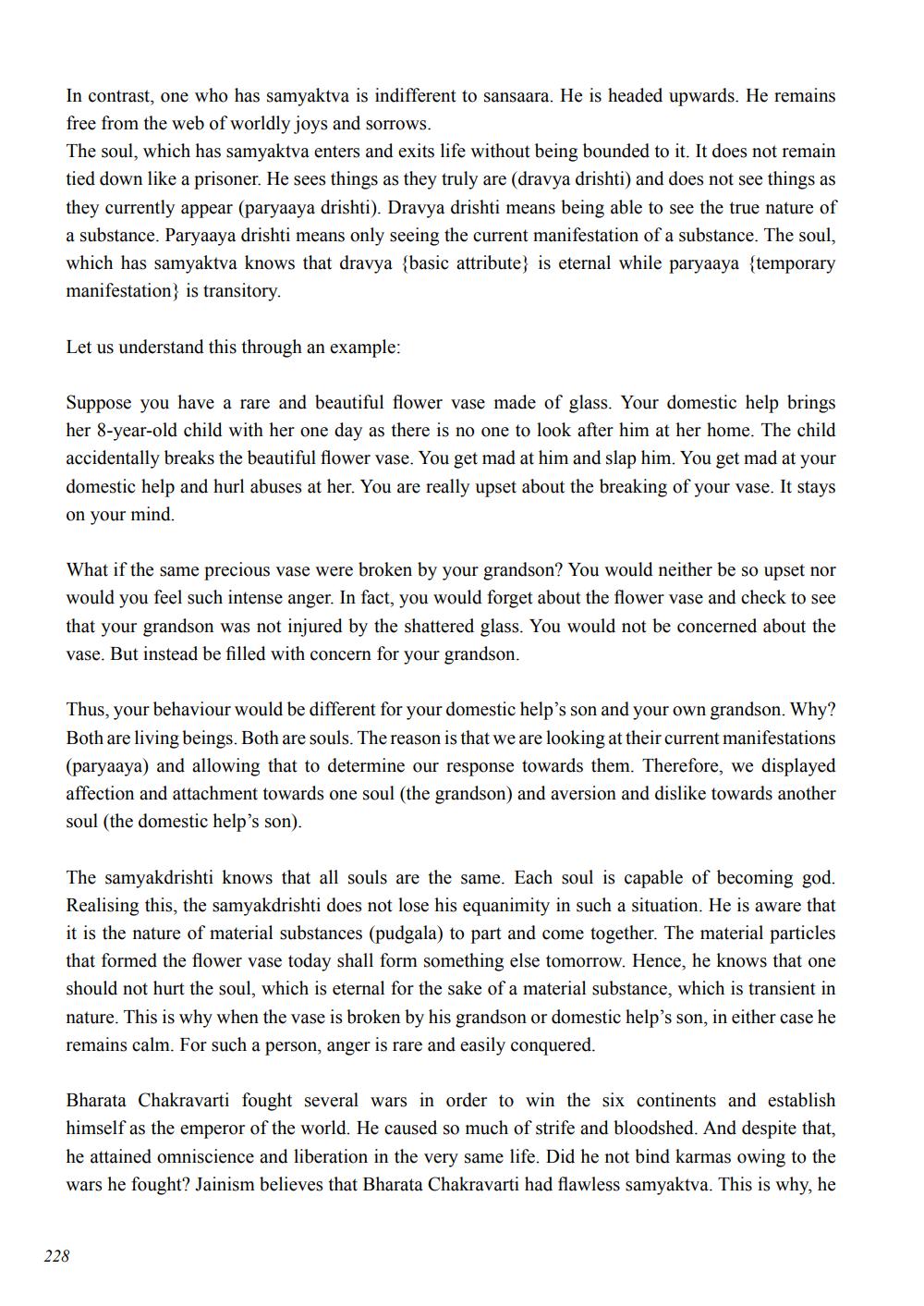________________
In contrast, one who has samyaktva is indifferent to sansaara. He is headed upwards. He remains free from the web of worldly joys and sorrows. The soul, which has samyaktva enters and exits life without being bounded to it. It does not remain tied down like a prisoner. He sees things as they truly are (dravya drishti) and does not see things as they currently appear (paryaaya drishti). Dravya drishti means being able to see the true nature of a substance. Paryaaya drishti means only seeing the current manifestation of a substance. The soul, which has samyaktva knows that dravya {basic attribute) is eternal while paryaaya {temporary manifestation} is transitory.
Let us understand this through an example:
Suppose you have a rare and beautiful flower vase made of glass. Your domestic help brings her 8-year-old child with her one day as there is no one to look after him at her home. The child accidentally breaks the beautiful flower vase. You get mad at him and slap him. You get mad at your domestic help and hurl abuses at her. You are really upset about the breaking of your vase. It stays on your mind.
What if the same precious vase were broken by your grandson? You would neither be so upset nor would you feel such intense anger. In fact, you would forget about the flower vase and check to see that your grandson was not injured by the shattered glass. You would not be concerned about the vase. But instead be filled with concern for your grandson.
Thus, your behaviour would be different for your domestic help's son and your own grandson. Why? Both are living beings. Both are souls. The reason is that we are looking at their current manifestations (paryaaya) and allowing that to determine our response towards them. Therefore, we displayed affection and attachment towards one soul (the grandson) and aversion and dislike towards another soul (the domestic help's son).
The samyakdrishti knows that all souls are the same. Each soul is capable of becoming god. Realising this, the samyakdrishti does not lose his equanimity in such a situation. He is aware that it is the nature of material substances (pudgala) to part and come together. The material particles that formed the flower vase today shall form something else tomorrow. Hence, he knows that one should not hurt the soul, which is eternal for the sake of a material substance, which is transient in nature. This is why when the vase is broken by his grandson or domestic help's son, in either case he remains calm. For such a person, anger is rare and easily conquered.
Bharata Chakravarti fought several wars in order to win the six continents and establish himself as the emperor of the world. He caused so much of strife and bloodshed. And despite that, he attained omniscience and liberation in the very same life. Did he not bind karmas owing to the wars he fought? Jainism believes that Bharata Chakravarti had flawless samyaktva. This is why, he
228




